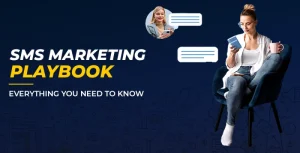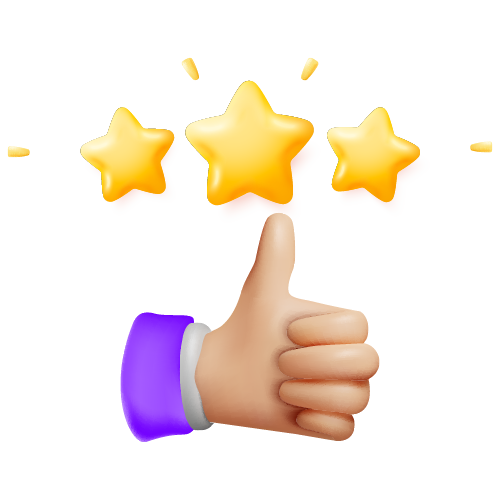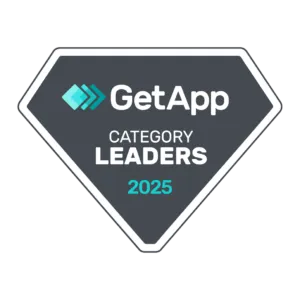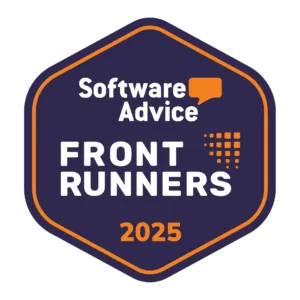Wait! Before you click away to read another article on the same topic, let me tell you something you don’t know, not not all articles and guides cover everything there is to know about SMS marketing.
It’s taken that titles starting with “Everything You Need to Know…” are the most deceptive kinds and only cover a few topics, that too, not in as detailed manner as we’ve tried to cover in this.
Here, we have tried to do justice to the topic by providing you with as much value as possible. Consider this SMS marketing playbook your Bible to grow your business and automate your text message marketing.
Talking about text message marketing, the industry is expected to reach $84.9 billion by 2027 with a compound annual growth rate of 3.8%. Another report found that worldwide spending on SMS marketing is estimated to cross $339 billion in 2023. (WOAH!)
Today, the definition of marketing has evolved. Thanks to the internet and digitization of the world, reaching new customers has become hassle-free with the help of SMS, email, and other channels.
SMS, can particularly, help develop connection and build relationships with your customers by enabling you to reach them through devices they spend their most time of the day—their mobile phones. SMS is one of the widely used forms of communication with 23 billion text messages sent daily.
Moreover, around 90% of consumers respond to a text message within the next thirty minutes of receiving it. Still, most marketers don’t use this instant mobile marketing channel to its true potential.
But if you are planning to adopt and adapt to the current SMS marketing trend to benefit from it, you are on the right track. This guide helps you understand the basics of SMS marketing such as
-
How to automate it
-
Strategies and best practices
-
List building & segmentation
-
Tools to use for automation implementation
-
Pricing & costs
-
Key metrics to track, etc.
So, without further ado, let’s begin by first understanding what SMS marketing is:

What Is SMS Marketing & How Does It Work?
Short Message Service, commonly abbreviated as SMS, is a text messaging standard that allows mobile phone users to send short text messages to one another. Since its launch in the 1990s, SMS has become a standard for exchanging text messages between mobile devices.
While SMS is still the universal standard of messaging, other messaging types like MMS and RCS are also included in the broader definition. Though there are several differences between SMS and MMS, RCS was introduced to replace the SMS channel.
Still, SMS has been a go-to channel for many brands thanks to the explosive growth of mobile devices.
As of April 2023, a total of 7.33 billion people own smart and feature phones. That’s a whopping over 91% of the total world population that can send and receive text messages.
Thus, SMS marketing becomes a lucrative choice for businesses to adopt and include in their overall marketing strategy.
Text message marketing is an approach where short and concise texts are used to promote products, nurture leads, and engage with customers. It’s a form of marketing that allows businesses to promote their products or services or provide information about their brands.
In other words, SMS marketing is an integral part of digital marketing. Through text messages, you can send time-sensitive messages, ask questions, offer services, quote prices, book appointments, send alerts, or do many more things.
Similar to email marketing, it’s an opt-in-based method where customers should provide their consent beforehand. However, SMSs are much shorter than emails and have higher open and response rates.
How SMS Marketing Works?
While you may have a fundamental understanding of how to send text messages with your phone, the process differs when you want to send business text messages. Often the dynamics and complexities involved in successful SMS marketing are a different matter altogether.
There are several moving pieces behind the scenes that can make you feel overwhelmed when you want to manage a large-scale SMS marketing campaign.
To start with business SMS marketing, you’ll first need to sign up on platforms like Textdrip. The A2P business messaging platform will provide you with a 10-digit long number enabled for sending messages and calling suite to communicate with your prospects.
Usually, these numbers are associated with one sender and the messages sent will appear as a text message to the user. But before you start sending SMS blasts, it’s important that your customers opt-in to receive your messages.
Moreover, your messages should include some level of personalization like addressing users with their names so they open and read your texts. Further, you can add location data, birthday wishes, or anything else to the message to make it seem more personalized.
The content of the message should feel compelling enough to make users interact with them in any way possible.
Typically, you can send two types of marketing messages with SMS marketing: Campaign and Transactional messages. Campaign text messages are the ones you send in bulk to promote your product or service to mass audiences.
Transactional messages are one-on-one messages that are triggered when a user performs a specific action. An example of such a message is when a user books an appointment for an insurance service or makes a purchase.
SMS marketing is a two-way communication channel and many businesses use it to provide customer service. However, it depends on the capabilities of your business texting solution.
Benefits of Using SMS for Marketing Purposes
SMS is the most beneficial marketing channel at your disposal for several reasons as listed below:
-
The Ubiquity of Smartphones: As stated earlier, over 90% of the world’s population own a smartphone today, making SMS an excellent choice to directly reach your customers.
-
Fast: Text messaging is easy and quick. You can craft messages promptly, send them quickly, and are delivered almost instantly. Unlike other channels, you don’t need to design templates or write a ton of text and wait for it to get delivered.
-
High Read Rates: According to one report, SMSs have a high engagement rate as 89% of users read messages within 30 minutes after receiving them.
-
High Response Rate: The same report also mentions that 90% of the users read and respond to text messages within 30 minutes of receiving them.
-
SMS Marketing Automation: One of the greatest benefits is you can automate your SMS marketing process once set up effectively.
-
Tracking: Your SMS marketing tool allows you to track useful metrics to see how your campaigns are performing.
-
Personalization of the Message: Text messages can be personalized by including the recipient’s name at the start to establish a connection with them. Including their interests or location would also help make the text more relevant and engaging.
Challenges Involved in SMS Marketing
While running a large-scale SMS marketing campaign, you may encounter several challenges and difficulties including:
-
Managing & maintaining a long contact list
-
Need direct opt-in from customers
-
Need to adhere to the message length and other limitations
-
Sending text messages to invalid or inactive users
-
Tracking the deliverability of SMS campaigns
-
Split testing message content for optimal outcomes
-
List optimization and segmentation
-
Overly-priced SMS marketing tools
-
Blocked message-sending routes
-
And many others
Use-Cases Of SMS Marketing
SMS marketing allows you to communicate with your target audience in real-time. But under what circumstances can you use SMS marketing? Let’s see:
1. Automated Drip Campaigns: Drip campaigns allow you to set up text messages that are sent after a certain interval to nurture and keep your subscribers engaged. You can get creative with SMS marketing and send a series of valuable messages, ask questions, send product suggestions, tips, etc.
2. Product Launches: You can use SMS marketing to let your customers know about the new product launches or services that you’ve recently added to your portfolio. Since SMS are read instantly, it enables you to offer your subscribers a chance to get the product before others.
3. Send Promotional Texts: Sales promotions are the most common use-case of SMS marketing where you can offer customers exclusive discounts, free gifts, promo codes, and others. The exclusivity of SMS makes it powerful and rewarding for customers.
4. Polls & Surveys: Another use case of SMS marketing is to send short surveys or polls after customers have made a purchase. Doing so helps you get their opinion about your brand and also makes them feel like they are part of your brand’s decision-making process.
5. Appointment Reminders: The high instant engagement of the SMS channel also makes it popular for sending automated appointment reminders. Sending reminders ensures that visitors attend the scheduled event and helps strengthen your relationship with them.
6. Sending Order Statuses: Sending order status messages like order confirmation, shipping, tracking link, and delivery may help you grow your relationship with customers. It helps customers keep tabs on their orders and improves their overall satisfaction

How to Use SMS Marketing to Your Advantage
Now that you know what SMS marketing is, how it works, its benefits, challenges, and use cases, let’s get to know how to use it to your advantage:
1. Define The Goals To Achieve With SMS Marketing
Like any other marketing strategy, define the goals you want to achieve with your SMS marketing. There are endless possibilities with SMS marketing, and you can easily get overwhelmed by it.
It’s taken that many businesses want to get into this mobile marketing channel, but they haven’t determined the ‘Why’, ‘What’, and ‘How’ of their SMS marketing campaigns.
Define at least one main goal to achieve, for example, increasing engagement for your real estate, solar energy, or other business industry.
Moreover, you can use the SMART goal creation template popularly used by the HubSpot team to create goals. This template allows you to set a goal that is specific, measurable, attainable, relevant, and time-bound. E.g., generating 2X more sales from SMS marketing in the next quarter.
It’s specific, measurable, relevant, and achievable within a specified time frame. By tailoring your SMS text messaging, you can easily achieve any SMART goal for your business.
2. Find a Great SMS Automation Service Provider
After creating goals that benefit your business, the next thing you want to do is find the right SMS automation service provider. Prioritize partnering with a cost-effective SMS tool that offers great customer support, has industry-leading deliverability, and makes it easy for you to launch your text message campaigns.
Further, ensure that the automated texting tool of your choice allows you to scale your SMS marketing efforts as and when required. Additionally, when selecting a vendor, evaluate complementary integrations, tools for growth, and the personalization level they offer.
It should offer real-time two-way communication, and calling functionality for urgent needs to reach out to customers.
Textdrip is one such SMS automation tool that helps you reach the right customers at the right time with the right message.
3. Launch Your First SMS Automation Campaign
Now that you’ve chosen your SMS automation tool, it’s time to complete your 10DLC Campaign Registry. Once successfully registered, you can start sending text messages to your subscribers.
You can even set up automation to welcome new users, which is triggered by the signup event. Further, send them a unique discount code or any other incentive as promised at the time of signing up.
After signing up, it’s essential to auto-send the first text message instantly as your brand or product is still fresh in their minds. Similar to automated emails, when a new subscriber joins, the event should trigger an automated follow-up or welcome SMS.
Since the SMS is all about short-form content, your text should pack as much value as possible.
While many may unsubscribe immediately after they’ve redeemed the discount or other incentives, your job is to inform them that they’ll keep getting discounts or other benefits if they remain subscribed.
This allows you to launch your SMS drip automation campaign to turn your leads into paying customers through the most effective channel.
4. Test, Text, And Implement
Texting isn’t rocket science, however, it requires a sophisticated approach and thorough testing. For instance, experiment with sending a one-off campaign to only a group of subscribers and see how they react before you go mass messaging everyone.
Additionally, differentiate your text message content from email, promoting the same product or service. Analyze how your SMS campaigns perform and based on the same include SMS in your overall marketing strategy. This helps you create an omnichannel experience.
Lastly, review your results and metrics to comprehend insights about what you’re doing right or wrong with your SMS marketing. This helps you test, improve, and implement tailored text messaging to identify the best SMS strategy that brings fruitful results.

SMS Marketing Strategies and Best Practices
While most customers prefer a text message-based approach for brands to reach out to them, there are several strategies and best practices that can make or break your SMS marketing. Let’s find out what they are:
SMS Marketing Strategies to Give a Try
There are diverse potential use cases of SMS marketing where you can employ a strategic approach to generate high engagement and responses. Here are some strategies that you want to try out:
1. Running Automated Drip Campaigns
Drip campaigns are just another form of automated marketing where text-based messages are sent based on several factors such as
-
Duration between two messages
-
User actions that trigger the next message.
It’s a time-released set of automated communications sent from your brand to users when they complete a specific action or after a certain duration. They are designed to pique the users’ interest and compel them to take action or engage with your brand.
In a drip campaign, you can set up which marketing message to send next and to whom based on the previous reaction. For instance, after sending an initial message asking for the type of insurance customers want to buy, you wait for the reply.
If users don’t respond, the SMS marketing platform will send the next message after a duration of 5, 10, 15, or X minutes/hours. Most tools like Textdrip allow you to customize this duration between two successive messages.
Through drip campaigns, you can automate your SMS marketing and send promotional messages to opted-in customers.
2. Promotional Campaigns
Promotional campaigns involve sending coupons, exclusive deals, new product launches, flash sales, and others that prompt purchases or drive urgency. Through this strategy, you can communicate your hot new product launches, especially if it’s a product that sells out fast.
Additionally, it helps drive more traffic to your website and compels them to make quick purchases. With punchy text alerts, you can nudge customers who have already purchased from you to return to your site and buy again.
3. Transactional Messaging
Transactional messaging involves sending texts such as order confirmations, payment confirmations, shipping, delivery, and others. These messages are triggered when a specific task is completed such as when users make a purchase, an order is shipped, or when an order is delivered.
4. Content Sharing Messaging
Creating content may be hard but sharing it isn’t. With an SMS channel at your disposal, you can instantly share content, provide advice, or share tips.
For instance, if you’re an expert in the real estate industry, you can share real estate purchase guides for your city/country with your customers. If you’re an expert in the healthcare insurance field, you can share advice or tips for choosing the best health insurance plan.
This allows you to leverage your knowledge to provide users with a unique perspective every once in a while.
5. Polls, Surveys, and Review Collection Texting
Polls and surveys allow you to collect responses and feedback from your customers. They are great to learn more about what your customers think of your brand or product. Since SMSs have a high response and engagement rate, this strategy allows you to send review requests quickly.
After customers have made a purchase, send them an SMS with a survey link to leave a review on Google, Trustpilot, or other platforms.
SMS Marketing: 8 Best Practices to Follow for Higher Engagement Rate
The below-listed best practices allow you to simplify SMS marketing. Let’s see what they are:
1. Ensure You Send SMS To Opted-In Contacts
Even if customers have given their contact details willingly, you can’t explicitly begin sending messages to their numbers without their express consent. Sending SMS texts to people without their prior permission is not legal and can attract hefty fines.
So, ensure that your contacts have opted-in to receive text-based messages from your brand. Since SMS texts are a direct line of communication, you want to ask permission before you plan your SMS marketing strategy.
You can collect user opt-ins through two methods: creating a specialized landing page or adding a checkbox on your contact form. A landing page is where users can sign up to receive SMS text messages in return for some incentive or discount.
You can also add a checkbox on any of your contact forms or at the checkout page where users can opt-in for SMS marketing. After they have opted in, send a Thank You/Welcome message while also asking them to confirm their subscription with ‘Yes’ or ‘No.’
If they don’t respond, it’s a cue that they are not interested in receiving your text. And if they respond with ‘No,’ remove them from your SMS marketing campaign. The ones who respond with ‘Yes’ really want to receive texts about promotions and offers from your brand.
Also, it’s essential to let customers know what they can expect from your brand and how often.
2. Keep Your SMS Short and To The Point
The full form of SMS is self-explanatory i.e. it should be short and concise. It’s not a channel where you write an entire article or eBook as you do in email. Text messages have a character limit, which gives you a limited amount of space to grab users’ attention.
If you are sending promotional messages, consider starting with phrases like “Special Offer”, “Just for You”, or others.
Starting your messages with compelling phrases will pique the interest of the recipient and encourage them to read further.
Also, an SMS is 160 characters long, so you want to get to the point quickly and avoid including unnecessary facts. In most cases, you can structure your message using the following framework:
-
Customer name
-
Company name
-
Offer or core message
-
CTA
-
Opt-out option
Additionally, you can include a link if you want to provide more information and redirect users to your website or the specific offer page.
3. Time The Delivery Of Your SMS
Timing your marketing messages is pivotal for the success of any marketing campaign and the SMS channel is no exception. It’s critical to choose the right time for sending your messages to users so that they can open and interact with them instantly.
You don’t want to send text messages in the middle of the night when customers are sound asleep and get disturbed by the notification from you. Also, avoid sending SMSs during holidays, early in the morning, or after dinner time.
Consider choosing a timeframe your users are actively working, or else strictly follow business hours for texting. Also, pay attention to users’ time zones and schedule sending your texts accordingly by choosing an appropriate time.
4. Personalize the Message & Provide Value
Another best practice is to keep your brand tone consistent across all the messages you send and personalize them whenever possible. For instance, begin your SMS by addressing users with their names and tailor the message by including things that interest them.
Personalized texting gets more attention from your customers and compels them to take action. According to a Salesforce report, 66% of customers want brands to understand their unique needs and 52% expect brands to always send personalized offers & messages.
However, personalization would only work to a certain extent because users expect those messages to be worth their while.
Get creative and keep things interesting by sending personalized messages that convey the value of your brand or product.
For example, send discount offers, tips on how to use your product, or an informative piece of content. Regardless of what you communicate with your customers, make sure the message is relevant and personalized and improves customers’ experience.
By providing useful information, you create a level of anticipation and surprise that adds value without feeling intrusive.
5. Include CTA
CTA or Call-to-Action is used to urge customers to take action and move ahead in your SMS marketing funnel. Based on what you want them to do, define what your CTA is going to be.
Do you want them to visit your website? Or book an appointment? Or redeem the offer you sent?
Regardless of what the next step in your funnel is, adding a strong call to action will encourage recipients to go through with it. Including an effective CTA in your SMS is simple by using the following examples:
-
Sign up now!
-
Redeem Now!
-
Book Appointment Now!
-
Complete this survey & get X% off!
-
Checkout using: TEXTDP20 code
6. Use SMS Marketing To Supplement Your Overall Digital Marketing
Incorporating SMS marketing into your digital marketing can help you build a strong brand, sell with a story, have meaningful conversations, and generate demand.
The beauty of digital marketing is that you can utilize so many channels to interact and engage with customers.
Using all the different digital channels, you can tie everything together to create a harmonious marketing ecosystem that enables you to generate leads at scale. SMS marketing is one such channel that can supplement your other marketing efforts.
You can use it effectively to communicate urgent and time-sensitive information with your clients.
7. Don’t Go Overboard With Sending Too Many SMS
While SMS marketing may seem a lucrative option, you don’t want to bombard users by sending too many texts.
It may be tempting to use SMS to send every piece of information but you don’t want to abuse the power of SMS marketing.
Unlike social media advertisements or billboards, consumers here have the choice to opt-out. And they’ll do so if they feel you are going overboard with sending too many SMS too frequently.
Instead, schedule drip SMSs that go out after a certain interval. Moreover, if you don’t have anything important to offer or urgent to ask, refrain from sending a message at all.
8. Provide a Way Out
Similar to how sending SMS without prior consent is illegal, not providing a way out to unsubscribe from your SMS marketing list is also illegal. There should always be an option for users to unsubscribe from receiving messages from your brand.
You can simply add “Reply STOP to unsubscribe” or a custom opt-out line of your choice at the end of each text. This gives customers a chance to opt out of receiving messages from your brand. It’s also important for you as your contact list will get filtered and only people who are interested in your product or service will keep getting your messages.
Since people with no interest leave, it’ll improve your overall success rate by targeting only the people who are still interested. Also, it’ll save time and money you may spend on nurturing uninterested people and allow you to focus on the interested ones.

How Does SMS Marketing Automation Work?
Automation is everywhere! Businesses and marketers are adopting automation to reduce workload, prevent human error, and boost productivity. Since you can automate repetitive tasks, it helps save up to 6 to 25 hours per week as reported by Zapier.
Text message automation can help save important hours that you can spend improving your business workflow. It brings plenty of other benefits like freeing you from sending messages manually to ensuring internal and external communication helps build trust and loyalty.
But what does automation mean in text message marketing? Let’s find out:
What Is SMS Text Message Automation?
Text message automation is the process of sending text messages to an individual or multiple recipients on automate. SMS marketing automation software like Textdrip helps you to schedule simple to enhanced messages or series of messages that are sent after a predefined interval.
Apart from that you can also send multiple different types of messages as listed below:
-
Simple Scheduled SMS: These are one-off messages scheduled to send out at a specific time of your choice. You can send such messages to notify or remind recipients of upcoming events, meetings, or webinars.
-
Recurring Drip Messaging: As explained, drip messaging enables you to send recurring messages at certain intervals. Recurring drip messages help nurture your prospects and guide them through your purchasing process.
-
Personalized Automated SMS: Personalization is important even while sending text messages. Based on customer segmentation data, you can automate personalization in messages with the customer’s name, age, interests, and other factors.
-
Promotional Automated Messages: You can also automate your promotional messages in bulk and send recipients the latest promotions you plan for increasing sales and conversion opportunities.
Benefits Of Automated SMS Campaigns
Marketing, in general, has evolved and automation just makes the work smarter, more efficient, and time-saving. Here are some more advantages of bringing automation into your SMS campaigns:
-
Automation eliminates the need to send each message manually to each customer.
-
The automation process runs effortlessly with no human intervention once set up correctly.
-
Doesn’t require additional hardware or a complex system. Just an SMS automation tool like Textdrip, which also works on smart devices through a mobile app.
-
Create multiple automation drip campaigns and schedule multiple messages at different times of the day.
How to Get Started with SMS Marketing Automation
Setting up a campaign is easy with the help of SMS marketing automation tools like Textdrip. Here’s a general process of doing so:
Define Your Business’s SMS Automation Requirements
First, define if your business needs another channel to reach out to the customer in addition to the channels you already use. Analyze the channels like email marketing or social media that you’ve integrated and decide whether they work or not.
Pick an SMS Automation Tool Provider
While there are several SMS automation service providers in the market, Textdrip has a loyal customer base. It includes a pool of helpful features such as bulk SMS marketing, personalized messaging, message scheduling, drip campaigns, quick responses, calling suite, and many others.
Easily import your contacts in Textdrip and filter them with the Landline remover tool to remove invalid or incorrect numbers. Additionally, we offer integration with Zapier that allows you to harness the true power of Textdrip.
Set Up Your First Automated SMS Campaigns
Now that you have selected the best tool for SMS automation, the next thing you want to do is import your filtered contact list. It just takes minutes but remember that you need explicit consent from your contacts before you begin sending them text messages.
If necessary, segment your customers into groups by adding them to relevant drip campaigns. Doing so allows you to send the right message to the right customers. Also, it enables you to create custom messages that bring higher returns.
Additionally, you can use a built-in AI-text generator or Spintext in Textdrip to rewrite better SMS copies that improve the response rate.
Once you set up the whole campaign, the text messages will be delivered to the intended users at their intended time. If you have set up a drip campaign, it’ll start sending automated text messages at a predefined interval.
Moreover, you can cancel, delete, or redrip any campaign in Textdrip to see the magic yourself.
Test Out Your Automated SMS Campaign
Before sending any text message to your customers, it’s essential that you test the whole process to ensure that everything works in order. You can do so easily by adding yourself or your known associates as recipients to schedule and send messages.
Doing so allows you to make sure whether you need to make changes before you go live with your automation campaign. Moreover, it prevents you from sending a bunch of wrong text or promotions to the wrong recipients.
Once the campaign goes live, monitor the performance, pay attention to things like open rates and click-through rates, and refine your automated SMS campaigns.
Use-Cases Of Automated Text Messaging
There are several different use cases of automated text messaging as listed below:
-
Create Automated Workflows: Automated workflows are sequences of messages triggered by an event or response from subscribers. Creating an automated SMS workflow is simple and allows you to tailor users’ experience.
-
Drip Messaging: These automated messages are sent at different intervals after people subscribe to receive your messages. You can chain different messages together in a series that gets triggered automatically after a predefined interval.
-
Send Auto-replies: Sending auto-reply texts is another use case of automated text messages. Here, you simply generate a response that goes out automatically to people who contacted you when you were unable to respond.
-
Broadcast Messages: Broadcast messaging is where you schedule and send text messages to mass audiences to promote time-sensitive deals, send reminders, and much more.
-
Abandoned Cart Messages: Abandoned cart text messages are automatically triggered when a customer abandons a cart after adding a product. This helps bring back lost customers and boosts revenue wasted due to abandoned orders.
-
Send Survey Messages: Text message surveys are great for collecting feedback from your customers. Here, you can send a series of questions that customers can answer by texting you back.

List Building and Management
List building and growing your subscriber base is the next major thing in your SMS marketing automation. However, just building a list is not enough. You may need to distribute your contacts into different groups and send them relevant offers with better personalization.
Doing so helps you come up with targeted campaigns that you can automate to generate maximum profits. But the road to profitability starts with list building, and here’s how you can do so:
Methods to Increase SMS Subscriber Base
Since you’ve reached here, we take it that you have found the right SMS automation solution that perfectly fits your needs. Now, it’s time to grow your subscriber base using the tactics that you already know, plus, implement some from the below list:
1. Offer Signup Incentive
This method involves creating a dedicated landing page to collect user opt-ins and offer discounts in return. Since people are more reluctant to share their phone numbers, you can sweeten the deal by giving them an explicit discount once they opt in.
Remember that, even if you already have hundreds of contacts, you can’t send them a single message until they opt-in to receive messages from you.
A landing page can help you build a strong contact list with the express consent of subscribers to receive promotional messages in return for a little incentive.
2. Create a Form or Redirect Users to the Landing Page from the Website
Apart from a landing page, you can integrate a form on your website or redirect users to the landing page from your website or email flow.
Importantly, pay attention to your signup keywords and use phrases such as “Join us to receive best deals and discounts through SMS.” Regardless of what you write, make sure that it expresses clearly what people are getting into.
3. Increase Subscribers with Email Marketing
Turning your email subscribers into SMS subscribers is another great way to build and grow your list. Email subscribers are your greatest assets as they are already interested in your offerings.
Thus, it’d be easy for you to turn them into your SMS subscribers by offering them a strong incentive. The key here is to promote exclusivity through SMS marketing and make your SMS list feel special.
4. Add SMS Opt-In Field at the Checkout
This is the simplest way and should work like a breeze. While customers are completing checkout, you can add a field to collect their phone number and a check box highlighting that they are opt-in to receive promotional texts.
So, optimize your checkout process to increase the SMS subscriber list and ensure that it’s compliant with industry norms.
5. Invite SMS Opt-ins from Social Media
Another best way to grow your SMS opt-in rate is to cross-promote and inform your social media followers of the benefits of subscribing to your SMS marketing. Explain that they now have a direct communication line with your brand and can easily get in touch with you for almost anything.
Also, promote the launch of your SMS marketing campaigns on Twitter, Facebook, Instagram, etc., and provide a link to the landing page where followers can subscribe.
List Distribution & Management
Distribution & segmentation of your contact list is as important as building a sizable list for running a tailored SMS campaign that maximizes your ROI. Doing so ensures that you are not overwhelming your subscribers with repeated messages that are irrelevant to them.
Moreover, it also helps reduce the costs of sending text messages to contacts that are unlikely to open and engage with your texts. Through SMS marketing software like Textdrip, you can manage your contacts, distribute them through Bucket, and assign them different drip campaigns.
Here are some criteria to consider when distributing your list:
-
Location of the audiences
-
Stage of the funnel and expressed interest in the product or service
-
Customer lifetime value
-
Response to previous messages
-
Segmentation based on loyalty
-
Customer personas
-
Profession of the target audience
List distribution is an ongoing process where you need to segment new subscribers based on the criteria listed above. The individual segmented list is not exclusive and may overlap with others and can be a part of multiple SMS campaigns.

Automation Implementation & Types of Text Messages To Send
The next step after list building and segmentation is to implement automation and determine what types of text messages you can send. SMS automation software empowers you to harness automation tools for configuring your campaigns.
Let’s get to know how to implement automation for your SMS campaigns
Steps to Implement SMS Automation
Automation takes away the hours of hard work of sitting at a desk writing and sending messages manually to each recipient. With tools like Textdrip, you can easily implement text message automation and create a tailored campaign in no time.
Here’s a general step-by-step process to implement text message automation:
1. Sign Up on the Platform
While there are several text message automation tools available in the market, Textdrip is one of the most cost-effective automation tools to get started with. Just after the signup, you can avail 1-month risk-free trial of Textdrip along with the 1000 complimentary credits to experience the magic of automation.
Textdrip is an innovative cloud-based platform that empowers you to effortlessly automate SMS marketing campaigns while delivering personalized text messages. Once you feel satisfied with the functionality, you can purchase more credits and start sending messages to your customers.
2. Import Your List of Contacts
To begin with automated campaigns, you’ll need to import a list of contacts that have subscribed to receive your messages. There’s a built-in feature from which you can upload and import your opted-in contacts and add them to your automated workflow.
Once uploaded, ensure that you send the right messages to the right people by segmenting your list of contacts appropriately. You can add them to your existing drip campaigns or create a new one to better target them for higher response and conversion opportunities.
3. Create Your Campaigns
The core strength of Textdrip is drip campaigning, which includes setting up multiple short messages that are sent out at specific intervals to a mass audience at once.
Configuring drip campaigns is easy. Define your flow of drip campaigns by adding as many text blocks as needed and setting intervals between two successive messages. Now, create your messages by using merge fields to personalize them for each recipient.
4. Send Your Automated Text Messages
Once you’ve done all the preparations, it’s time to schedule and run your automated drip campaigns. Textdrip also allows you to schedule text messages that are sent automatically to individual users.
Moreover, you can also set up auto-replies for specific cases such as when you are on vacation or your account will be inactive for too long.
Types of Text Messages You Can Send On Automate
Now that you understand how text message automation works and how to implement it using Textdrip, let’s jump to the types of text messages you can send on automate:
1. Welcome Texts
Similar to welcome emails, welcome SMS can seem a nice first message when a customer opts in to your SMS marketing program. Also, if you’ve offered some form of incentive to compel users to sign up for SMS, welcome texts are perfect for the same.
You can send them a welcome text such as below,
“Welcome to [company name]’s community. Use the [discount code] to get [offer] for your next order with us. Visit – [link]. Reply STOP to opt-out.”
2. Product Announcements
Another example of text message marketing is to announce new product arrivals to spread awareness among your subscribers. Sending such kinds of announcements is perfect to drive traffic and create buzz for your new products.
However, you want to be careful and send such announcements sparingly to not spam your customers. Here’s an example text message you can send:
“Just Arrived! Add [product name] to your collection to take it to the next level. Buy now from – [product link] until the stock lasts. Reply STOP to opt-out.”
3. Schedule Appointments
Businesses belonging to various industries such as real estate, insurance, and others can use automated SMS workflows to ask customers about their preferences and book appointments.
The automated workflow can commence by asking subscribers about their interests, then follow up with providing a few options, and end with scheduling an appointment.
Here’s an example text message to send:
“Hey [first name], thanks for showing interest in our [property/insurance plans]. Is it a good time to visit tomorrow at 3:30 PM? Reply YES to confirm or STOP to opt out.”
4. Discount & Sales Messages
Another text message type that you can automate is sending discounts, promo codes, and sale alerts in bulk to your customers. Alerts like Flash Sales, Seasonal Sales, and other time-sensitive deals are great ways to engage your customers.
Here’s a sample message you can send:
“Hey [first name], exclusive deal just for you! Claim your deal in the next 24 hours before it’s too late. Use [promo code] to get X% off at checkout. Visit – [link]. Reply STOP to unsubscribe.”
5. Personalized Offers
Personalized offers for events such as birthdays or anniversaries show that your customers are more important to you than numbers. Scour your customer data for birthdays and create a campaign to offer them personalized rewards to celebrate their birthday.
Similarly, you can reward customers who have been with you for over 1 year or so and send them a special offer to celebrate the anniversary. Such messages tend to trigger emotional responses that impact positively on your sales.
Here’s a sample of the message you can send:
“Happy Birthday [first name]! We, at [company name], wish the world and want you to celebrate the day with a surprise gift from us. Visit – [link] and redeem the [code].”
6. MMS Messages
MMS messages is where you can attach multimedia like images, GIFs, and others in your SMS text messages. It gives you an enhanced character limit and visual capability to WOW your customers.
Textdrip SMS platform also allows you to attach images, GIFs, emojis, etc. to their messages. You can automate MMS messages the same way you automate SMS messages in Textdrip.

Best Practices & Frequency For SMS Drip Campaigns
While setting up your automated drip campaign, keep the following best practices and frequency of text messages in mind:
1. Keep Compliances for Text Messages in Mind
Businesses and contact centers using SMS and calling facilities need to comply with several norms from both state and federal agencies. Your automated drip SMS campaigns should always reach only those who have opted in to receive messages from you.
Moreover, they should have a clear way to unsubscribe in case they want to opt out of receiving texts from you. Make it a habit to send messages during business hours, and respect calling time restrictions. These are just a few rules you should follow, visit here for more information on compliance requirements.
2. Stay Within the Character Limit
As mentioned before, SMS has a limit of 160 characters, which is not a lot when you want to add information like customer name, company name, offer details, opt-out options, etc. Thus, keep your messages short and concise to come directly to the point.
Say exactly what users want to know instead of dragging users from unwanted information. Additionally, most A2P tools offer text character limit extensions to include as much information as needed.
Textdrip allows you to go beyond the 160-character limit. Such flexibility enables you to add important information without limiting your message to 160 characters.
3. Use Text Abbreviations
Text abbreviations are shorthand language used for writing concise and efficient messages. It usually involves using a combination of letters, numbers, or symbols. For example, some common text abbreviations include LOL (laugh out loud), TTYL (talk to you later), etc.
Today, time is of the essence and abbreviations make communication quick and keep the conversation flowing. Also, they help you ensure your text message stays within the character limit.
4. Words To Avoid To Reduce SMS Spam Score
Make your SMS feel as human as possible by avoiding certain types of words or slang to reduce spam scores and improve your deliverability.
Slangs, for example, “dang”, “lit offer”, or “freakin”, etc. may seem casual but risk sounding unprofessional. Thus, avoid such kinds of wordplay or anything that could feel like misleading the customers.
5. Audience Segmentation
We already touched upon this topic earlier, and here also, we want to emphasize that your business is connected to diverse customers. They have different motivators driving them and are at different stages of the funnel.
So, taking a one-size-fits-all for running a drip campaign won’t work unless audience segmentation is used. By analyzing your customer data, you can segment customers and prospects according to their personality traits into the same group.
This will help you create tailored drip campaigns for each group of customers and send personalized messages. You can also segment customers based on where they learned about your product or service, how long they have been a subscriber, or the type of content or offer that drove them to purchase.
6. Set The Frequency To Send The Right Message At The Right Time
Customers don’t like receiving SMS texts at inconvenient hours, especially when such notifications feel like a disturbance. Make it a general rule of thumb to never schedule your drip messages to be sent outside of business hours.
To optimize the frequency to set the right time of sending a message, you can split test to determine the time of the day and day of the week for optimal outcomes. Also, keep in mind to not send too many messages within a short period of time because it increases the probability of users opting out.
Moreover, you don’t want to send too few messages over a too long timeframe, which increases the probability of users forgetting your brand. Thus, keep text message frequency once a week for most cases and increase it only when there are relevant events on the horizon.

Key Metrics To Measure For Successful SMS Marketing
Depending on your marketing budget, you may allot a huge or small amount of money to SMS marketing. But just as spending some bucks on SMS marketing is essential, it’s also vital to keep track of how successful this digital marketing method is.
By using several key SMS marketing metrics and benchmarks, you can track how well your SMS marketing campaign performs. To do so, here are some essential metrics and KPIs to track:
1. List Size & List Growth
List size is a measure of how big your contact list is after prospects subscribe or unsubscribe to receiving your SMSs. List growth is a measure of the rate at which your list size grows on a weekly, monthly, or yearly basis.
Use the following formula to calculate the list growth rate:
List Growth Rate = [(No. of subscribers at the end of a period – No. of subscribers at the beginning) / (No. of subscribers at the beginning)] * 100
2. Return on Investment (ROI)
ROI metric gives you an idea of how your SMS marketing campaigns are generating returns against the investments that you made. Here’s a formula you can use for ROI calculation:
ROI = [(Total revenue generated – Total costs/investment) / Total costs/investment] * 100
3. Delivery Rate
The delivery rate of your text message gives you the number of messages that are successfully delivered to your customers against the total number of messages sent. The formula to calculate the same is,
Delivery Rate = (No of messages delivered / No of messages sent) * 100
4. Response Rate
Response rate is a measure of how many users have responded or interacted with your message by replying, sharing, clinking on a link, or doing something that counts as a response against the total number of messages delivered.
Here’s a formula you can use to calculate the response rate:
Response Rate = (Number of responses or actions taken / Total number of delivered messages) * 100
5. Unsubscribe Rate
The unsubscribe rate is the rate at which users are unsubscribing to receive messages from your brand. They may either not want to receive messages anymore or are no longer interested in what you have to offer.
Here’s a formula to measure the unsubscribe rate:
Unsubscribe Rate = (Number of users unsubscribed in a period / Original number of subscribers at the start) * 100
6. Customer Acquisition Cost (CAC)
Customer acquisition cost refers to the amount you may have spent to onboard a customer through SMS marketing. High CAC means that your customer segmentation is wrong or you are targeting the wrong customers.
Here’s a formula to measure the same:
CAC = (Total cost of running SMS marketing campaign / Total customers acquired through the campaign)
7. Click-through Rate
The click-through rate represents the percentage of people who click on the link provided in the SMS. It’s a measure of how many people click the link against the people who opened the message.
Here’s a formula to calculate it:
Click-through Rate = (Number of clicks your messages generate / Total number of opens)

SMS Marketing Software Pricing & Overall Costs
The right SMS marketing software will streamline text messaging marketing and automation for your business. As explained, SMS marketing holds ground for the benefits it offers against the challenges it poses.
However, the key thing for any business that wants to leverage the power of SMS to boost its promotions and sales generation program is to consider the pricing and costs. Because everything boils down to one thing: how much will it cost for your business to run SMS marketing campaigns?
Well, the answer to the same will vary depending on the software you choose. For instance, Textdrip is the most cost-effective SMS marketing software out there in the market compared to others. Here’s how the pricing of Textdrip works:
Textdrip Pricing & Costs
Textdrip offers simple and the most competitive SMS marketing pricing, making it easy for all businesses to get started with SMS automation. With a base subscription price of $34.99 per month and the flexibility to purchase credits for required messages to send with pay-as-you-go.
This enables you to scale or minimize your efforts as required. Further, Textdrip adorns you with the functionality to purchase multiple numbers or add your team of sales heroes with multi-profile to distribute your workload and assign different roles to each number or user profile.
Our text messaging system is based on a credit system and each credit is worth $0.012, meaning sending 1000 SMS will only cost you $12. You can even purchase more credits or buy gift certificates at a 20% discount and redeem the same.
The cherry on top is you can avail Upto 30 Days risk-free trial of Textdrip along with Upto 2500 complimentary credits. Book a demo now or start free with Textdrip today to experience the magic yourself.
Note: Pricing is for per outbound segment, which should be 160 characters or less for a single segment and 153 characters or less for multiple segments.
With each credit, you can send 1 SMS to 1 sender. If your SMS goes beyond 160 characters, you’ll be charged additional credits. Similarly, image attachments will consume 5 credits per message per sender.
Thus, the overall cost of using the Textdrip platform after the trial period will be $19.99 per month + the amount to purchase credits you need to run your SMS campaigns.
Competitor Pricing & Costs
After analyzing the pricing and cost structure of competitors, we’ve found that most of them offer tiered plans with daily or monthly limits for sending messages. For instance, most competitors offer plans based on how many messages you want to send in a month, and pricing for them varies greatly.
So, if you plan to send 500 messages this month and your partner wants to send 2000 messages, you both will pay different amounts. Also, if you change your plan next month to 1000 to 2000 messages, you’ll be charged differently. Textdrip has no such disparity in pricing plans.
Moreover, with premium plans, your effective price for purchasing message credits reduces. This also means that if you choose a plan with a 500 monthly message limit, you’ll pay $0.055 for one credit against the $0.040 for the 2000 monthly message plan.
Now imagine the cost it would amount to if you were to send 50,000 texts in a month. For this case, you’d have to pay approximately $900 to $1200+ per month plus additional credit purchase charges.
Contrary to this, Textdrip seems way more affordable at just $19.99 with no monthly limit for sending SMSs. Though there isn’t a daily limit for sending messages, Textdrip recommends keeping it to 2000 a day to avoid carriers flagging your number as spam.
Also, we’ve compared different SMS marketing pricing strategies to help you choose the most cost-effective solution.
Overall, Textdrip is the most affordable with its competitive prices compared to the majority of market-leading SMS software providers. Also, recently Textdrip has won the 2023 Rising Star Award from Finances Online with a 98% user satisfaction score.

Industries That Can Benefit From SMS Automation
SMS marketing automation offers several benefits but can your industry or business benefit from the same? Here are some industries that can use SMS marketing effectively to benefit from it:
1. Real Estate
Real estate agents can benefit from text message marketing to connect with clients and provide new property information quickly. Realtors need a way to reach out to their customers efficiently and send a value-packed message or relevant property details to potential buyers.
With SMS, not only can you connect directly with interested prospects but also generate more opportunities for sales. You can further provide information on open house visits, newly available properties, and do much more to empower your real estate business with SMS.
2. Health Insurance
The health insurance industry has crossed $3 trillion in 2022 and is expected to grow at 5.5% CAGR between 2023-2032. This growing expenditure has positively influenced the industry as people are becoming more aware of their health concerns.
Also, COVID-19 has fueled the growth of the health insurance industry, which means there’s great potential to use the SMS channel to maximize ROI. Through SMS text messages, you can promote plans, write free tips, send invites, book appointments, and send reminders to potential clients.
3. Solar Energy Companies
SMS for solar and other renewable energy companies can help deal with end-consumers and utilize the potential of the channel to their benefit. SMS is a powerful business growth tool that solar companies can leverage to generate sales opportunities, send promotions, send follow-up messages, book appointments, and do more.
Thanks to high delivery and response rates, SMS is important for solar companies to not only grow their sales but also provide customer service through mobile platforms.
4. Finance & Mortgage Companies
Mortgage and finance companies can only succeed by building good relationships with their clients. Text messaging is a great way for mortgage and lending companies to build fruitful connections with their clients.
With a simple text, you can update the client about their appointments, payment confirmations, loan approval status, etc. Messaging helps you nurture clients by sending timely updates, scheduling appointments, sending quick responses, and doing more.
5. Travel Companies
SMS for the travel industry helps send time-sensitive deals and travel itineraries to pique users’ interests and promote your business effectively. That’s where SMS can come in handy to contact and update your audiences about their travel plans so that they can prepare in advance.
Also, you can send them sudden changes in travel itineraries like flight delays, cancellations, accommodation updates, and others. Sending such texts will save your customers a great deal of stress and improve your reputation in their eyes.
6. Online Shopping
Consumer-focused industries such as online shopping and eCommerce can use SMS channel to their advantage. Businesses can use SMS marketing to offer customers discounts, promote new product arrivals, send instant order updates, and update about bonuses.
Since SMS is an urgent and direct way to communicate with shoppers, eCommerce companies can send up-to-date information. Apart from that, you can also leverage the SMS channel to promote brand loyalty and turn one-time customers into repeat buyers.

Take Your SMS Marketing Notch-Higher
It’s safe to assume that this detailed guide has given you a better understanding of how SMS marketing works and why it’s great. It offers instant & reliable delivery, has a high engagement rate, enables you to directly connect with customers, and supplements your overall digital marketing strategy.
Despite such popularity of SMS, it continues to be an underutilized channel, which presents a whole lot of potential for your business. And there has never been a great time to start as thousands of businesses realize the capabilities it holds.
So, get started today with the most flexible and affordable SMS marketing automation software. Book a demo with us or talk to our sales team to learn more about Textdrip and how it can help your business.
![Bulk SMS Marketing Starter Guide — How to Create Bulk SMS Drip Campaign? [Infographic]](https://textdrip.com/wp-content/uploads/2024/07/BULK-SMS-MARKETING-STARTER-GUIDE-1-300x153.webp)












